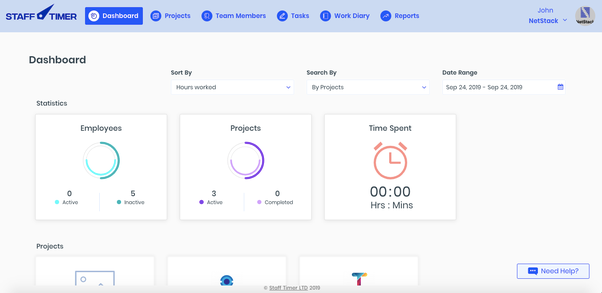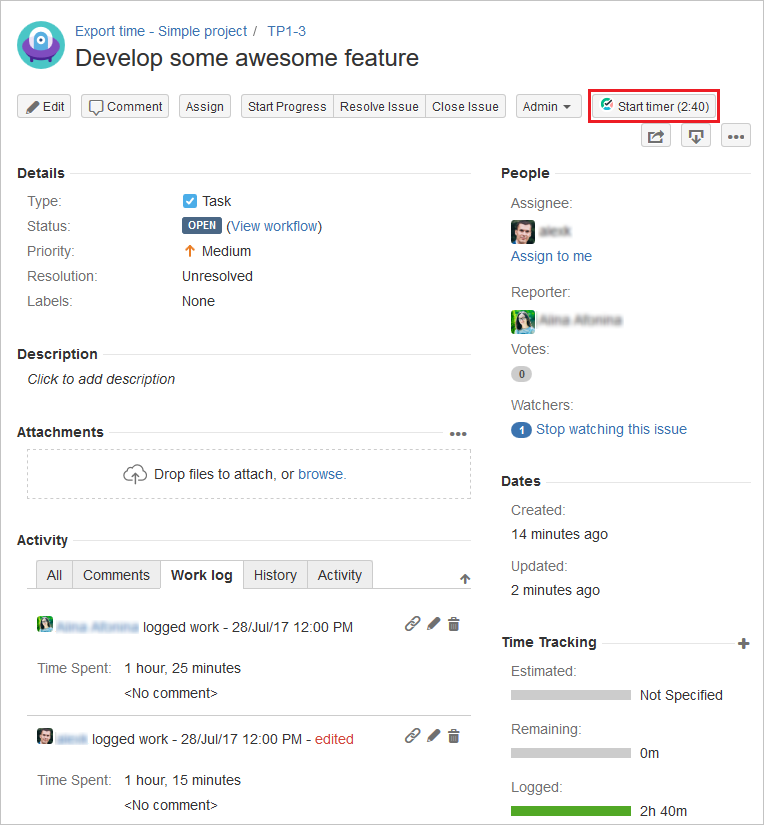Demystifying Time Tracking In Scrum
Time tracking in Scrum has been a topic of heated discussions. Apart from accusations of imposing micromanagement, time tracking is 'blamed' for a decrease in productivity and even time management fails. But is it so? Let's zoom in on details to get a bigger picture.

Being the topic of numerous discussions, time tracking in Scrum has amassed an army of its proponents and antagonists.
Foreword
Scrum (originating from rugby and implying the formation of players for achieving the most effective restart of teamplay) is the form of agile approach to development. Scrum environment provides a high level of adaptability within project management.
By enabling managers to break down the process of development into small incremental pieces, Scrum ensures that teams:
- get and receive the right feedback
- develop within an unbroken workflow
- stay flexible and agile.
Hence, Scrum environment creates perfect conditions for building products fast and with guaranteed results of success in terms of time and project management.
The word 'fast' invokes the questions pertaining to project time duration including time estimates, deadlines, task time tracking and, in general, work time tracking.
While the project (that by default implies start and end dates) makes the idea of tracking as the effective means of creating accountability indisputable, the issues related to forms of tracking have been the subject of much debate in dev communities.
The discussions ( often quite heated) range from the choice between tracking in story points or in hours to highlighting particular themes to bring estimated time and burned hours in total alignment.
Acclaimed professionals have a lot to say about who should be responsible for time tracking and what benefits it brings in the long run.
At this stage of discussions, it is evident that:
- time tracking being the essential part of project management is deeply integrated into the Scrum methodology
- time tracking in Scrum creates competitive advantages in terms of accountability
- implementing time tracking in Scrum with the right time tracking app makes a difference on the level of goal achievement and process optimization.
Advantages Of Time Tracking In Scrum
In Escape Velocity, Doc Norton reminds the readers of the means of achieving agility:
Once an object achieves escape velocity, it is able to free itself from the force of the massive body without any additional impulse.
Tracking time for project management purposes can be the means of achieving desired agility across all the project stages.
As a warning, indeed, time tracking can be bad and dumb if the team is just 'punching' the clock due to the reaction to attempts of micromanagement. Taking a broader perspective, when time tracking acquires the status of management strategy rather than an effective tool of business optimization, it shows wrong prioritization of processes over people.
Time tracking regarded as the means supporting project management always leads to beneficial outcomes. Translating this statement into mathematics, we can see that without time tracking data analysis, the project manager knows only the time capacity in a sprint. For example, 4 developers working 7 hours per day in a 10 day sprint create a fixed capacity of spending 280 hours.
The valuable outcomes of the team member sprint increment alongside time metrics bring a dragonfly-eye view over the project performance. Thus, time tracking in Scrum contributes to a project success in multiple ways. In particular:
- it helps identify bottlenecks in the sprint
- it makes time estimates mathematically justified
- it improves planning
- it improves communication.
Discussing the question of achieving precision in time estimations, Software Brothers highlighted the story points issues in a brilliant quote:
The more details about the task – then less uncertainty there is in the estimation. But sometimes uncertainty can only be eliminated by actually starting work on the issue. That’s why estimating for tasks that take more than four hours long is usually not very accurate.
Time trackers with advanced functionality can be of great help when it comes to turning sprint backlog and burndown charts into decision tools that reflect reality by creating transparency of the project landscape with time metrics. As a result, it turns rough guess of story points into precise iteration planning and increases business productivity.
For instance, using time data, managers can achieve better task leveling, navigate the project easily and see where pair-programming, or re-allocation of resources would be of help. Furthermore, at the Sprint Retrospective, the team can get more 'targeted' guidance once the time-related data is brought into focus.
Potentially, it creates a bigger number of positive business outcomes while assisting in upscale and growth of the business.
Additionally, with the ongoing work environment transformations and pressures associated with remote mode of work implying the increased amount of virtual communication, an agile approach as well as the principles of Scrum come to the forefront, and time tracking technology can greatly assist in bridging any task management and productivity gaps and prevent teams' veering off course.
🕑🔍📝🎯Time tracking helps build responsive strategies to change: rather than simply follow a plan, time tracking data can equip managers and teams for continuous adaptation as the core concept of the Scrum methodology.
Automatic time trackers incorporating wide task management functions belong to the agile tools that assist businesses in the improvement of team performance. Time tracking data can be applied for improvement of communications and increase of productivity from the stage of Sprint Planning meeting to Retrospective.
Time Tracking Apps In Scrum To Make Your Work Easier
The best-suited apps for time tracking in Scrum must be responsive in terms of:
- easy integration
- task management capabilities
- diversity of reporting functions.
Based on analysis of these criteria, we would recommend the top three that align with sprint objectives at best and let your think about the number of hours to the goal completion.
actiTIME
The essence of 'doing' Scrum is being flexible, and time tracking can add greatly to increasing flexibility at all the stages of project management. actiTIME lets teams stay flexible and keep by-minute track of the performance of particular tasks with laser-focused precision while creating a highly realistic picture of what the team’s time is spent on.

Aside from enhancing project managers' experience, including time tracking data into the project analysis helps see the current team progress and boosts team productivity considerably. Easy access to historical data assists in better planning and setting accurate estimation of similar projects.
Implementing actiTIME in Scrum lets remove the burden of manual time entry and increases the accuracy of time tracking directly from project management tools like JIRA, Asana, etc. With actiTIME integrated in the project management process, teams operate on comprehensive reports that enable the team members and managers to build more productive time management strategies.
Staff Timer
Staff Timer is a reliable automatic time tracker matching the Scrum methodology needs as it can keep track of all the active windows along with task performance for maximizing project management transparency. It also supports the function of sending voice notes that comes in handy for improving communications across any size dev teams.

The implementation of Staff Timer means that the teams and managers will get access to measurement of task success rate in a click. Understanding the productivity levels is also available in the functionality of this time tracker and can be activated through the functions of screenshots that admins can set at intervals of choice.
It can not only empower teams with means of automating mundane tasks but help view the developer’s recorded time in easily generated reports on aggregated data by specific categories (for instance, to see time utilization on resolving bugs).
TMetric
Automating the time monitoring process is efficient because it eliminates the necessity for ongoing data input. TMetric provides tracking in real time, which enables teams to figure out the progress in the existing sprint and define at a glance whether the objectives of the Sprint will be accomplished or not.
Importantly, for agile teams, safety is as essential as fast. Aside from the accuracy of automatic calculations, TMetric enables teams to keep tracked data secure. Overall, TMetric will help you track your sprint progress with multiple options ranging from task management capabilities, diverse reporting functions to seamless integration in most popular project management suites like JIRA.

TMetric also proved to work as a reliable tool in the shift to remote working and demonstrated that technology removes any hindrance to efficient collaboration. Aside from individual performance, projects, in general, can get be optimized: for example, in case the team groups arranging routine under an 'admin' section it can be duplicated every sprint.
With TMetric you can:
- automatically prioritize your backlog
- set time estimations for sprints
- work with Gantt charts and Kanban boards.
TMetric is designed to assist developers' teams in simplifying workflow and creating the best work environment. Based on TMetric time metrics, managers have a list of validated ideas for a better organization of the projects and task arrangements. It creates a welcome move toward autonomy and reduces tension between adaptability and the strict norms of planning.
